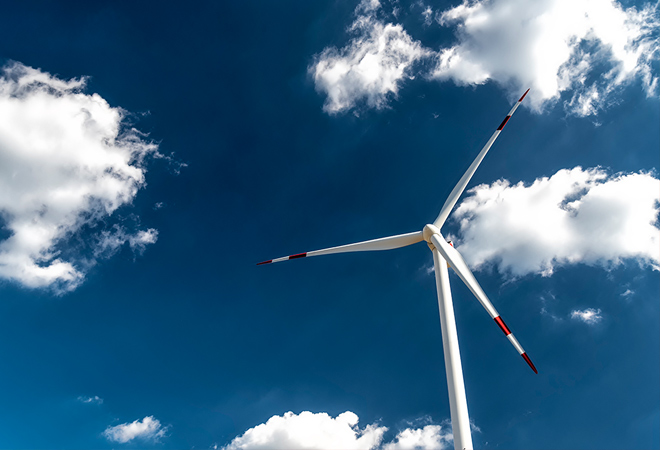
Increased greenhouse gas emissions as a result of India’s increased energy consumption and the country’s future dependence on fossil fuels to serve its energy security have raised serious environmental concerns. As an emerging economy, India has a huge opportunity to meet its development goals in minimal energy consumption. Energy efficiency, termed as ‘the first fuel’ by the International Energy Agency (IEA), will play a pivotal role in determining an optimal energy portfolio for India.
The deployment of clean energy systems is gaining momentum through policy interventions in India and across the globe. Although, one of the most inexpensive achievable option available is adopting an energy efficient lifestyle. Energy efficiency is increasingly becoming a key pillar of energy transformation policies in the world. Implementing robust energy efficiency interventions lead to curbed air pollution, decarbonisation, improved energy access, better resource use and enhanced energy security. The transition to clean energy will be faster and cheaper if energy efficiency measures are undertaken.
As a part of the Paris Agreement, India has committed to reducing its energy intensity (units of energy use per unit of GDP) by 33-35 percent by 2030 compared to the 2005 levels. The implementation of various energy efficiency schemes by the Bureau of Energy Efficiency (BEE) such as the National Mission for Enhanced Energy Efficiency (NMEEE), Demand Side Management (DSM), Energy Conservation Building Code (ECBE), etc. have yielded positive results. As per recent data released by the power ministry, the country has already reduced the energy intensity of its economy by 20 percent compared to 2005 levels. This has resulted in total energy savings of 23.73 MTOE (million tonnes of oil equivalent) in 2018-19, resulting in savings worth INR 891.22 billion. There is a still a vast untapped opportunity to expand energy efficiency measures in the residential, micro, small and medium enterprises and the transport sectors.
Poorly-designed buildings lead to higher energy consumption per unit of the built area. Inefficient buildings make the inhabitants uncomfortable, increasing their need for more appliances to improve well-being. Efficient use of material and resources in construction will result in low energy loads in buildings. The state governments need to prioritise the uptake of Energy Conservation Building Codes (ECBC) for both commercial and residential buildings and make it mandatory in new building construction. The BEE recently launched a new programme for conducting feasibility tests on 100 existing buildings to develop a framework to transform them into Nearly Zero Energy Buildings (NZEB). The objective of this initiative is to develop a framework for conventional buildings to achieve low energy use per unit area. It is crucial for India to push for the expansion of the NZEB programme to all segments of the construction sector. A report by the International Finance Corporation (IFC) has stated that in emerging markets, green buildings will offer a USD 24.7 trillion investment opportunity. The government of Maharashtra has partnered with the IFC to promote green housing. There is a need to develop ties with various multilateral organisations to fund such green housing initiatives.
The high ambitions of citizens to live and work in comfortable airconditioned spaces with appliances providing ease of living will lead to a multifold increase in energy consumption. An approach to change the course of energy use behaviour through energy efficiency programmes is needed to curb future energy demand. There is a need to run multiple large-scale awareness campaigns to inform consumers about the benefits of energy efficiency. Appliances like refrigerators, air conditioners, geysers, microwaves, coolers and heaters, television, lights and fans contribute to residential electricity consumption. Adoption of energy efficient models of these gadgets can substantially cut future electricity consumption. The standard and labelling (S&L) programme started by BEE sets mandatory standards to make these appliances energy efficient and promotes them through labels. Currently there are ten appliances which need to have mandatory standards and labels whereas 16 under the voluntary category. The energy performance for many of these appliances has been made stringent recently which shall help in the long run. To promote commercially available efficient technologies, the BEE regularly tightens the standards and labels of these appliances. India needs to strive to compare these standards with international standards for further improvement.
There is also a need for behavioural interventions for nudge consumers to buy 5-star appliances. A recent example of such intitiative by the BEE and central government is the newly set energy efficiency standards for room air conditioners where the default temperature is to be set at 24°C which leads to electricity conservation. The BEE also launched super-efficient air conditioners and hopes to sell 50,000 units (expected to save 27 million units of electricity and mitigate 22,140 tonnes of CO2 annually) in the first phase of the project raising it to 250,000 by second phase by investing INR 200 crores. Such bulk procurement programmes can help in changing markets to energy efficient appliances and reducing the prices due to economies of scale. The credibility of the S&L programme can be increased by bringing transparency in the process of fixing standards and ensuring compliance. Testing random samples of appliances from the market will increase the trust between sellers and consumers. The BEE has also recently released new star rating standards for fluorescent lamps and ceiling fans. The BEE along with consumer and civil society groups should scale up efforts for promotion of energy efficient appliances.
There is inadequate data on residential energy end-use which results in assumptions to model policies. In this context the BEE has launched the National Energy End-use Monitoring (NEEM) dashboard which will help in monitoring end-use energy consumption data and establish consumer behaviour patterns. This will help in projecting future electricity needs and demand side energy management strategies. It can also help in targeted sale of energy efficient appliances and developing outreach and awareness campaigns. There is an urgent need to scale up this intervention to different household types, geographies and climate profiles.
Also, India’s power sector is slated for a revamp with multiple policy level changes through the amendment of the Electricity Act. One of the major initiatives as a solution to issues like low billing efficiencies leading to revenue losses, heavy transmission and distribution losses, monitoring of electricity consumption, etc. is installation of smart meters. The government of India is targeting installation of 250 million smart meters over the next few years. Smart meters will enable access to real-time data of electricity use, both for the distribution companies and the consumers, which will aid in tracking the quality of power supply and help in predictive maintenance and future infrastructure planning. Monitoring of data at household level will identify consumption segments leading to peak demand helping discoms to propose load flattening interventions, tariff rationalisation and avoiding additional power generation. This will also help in preparing demand side management strategies which can be targeted to create awareness among individual consumers to promote energy conservation schemes. Hence, the installation of smart meters at a fast pace can help India in facilitating energy efficiency interventions at a large scale.
Energy efficiency interventions are one of the most cost-effective means of achieving a low carbon transition. Early adoption of energy efficient strategies will have a bearing on future energy use and hence impact of climate change and conservation of various energy resources can provide affordable, reliable and sustainable energy access solutions to underserved populations. Embracing an energy efficient lifestyle will provide a positive impetus towards transformation of India’s energy system for the better.
The views expressed above belong to the author(s). ORF research and analyses now available on Telegram! Click here to access our curated content — blogs, longforms and interviews.




 PREV
PREV


